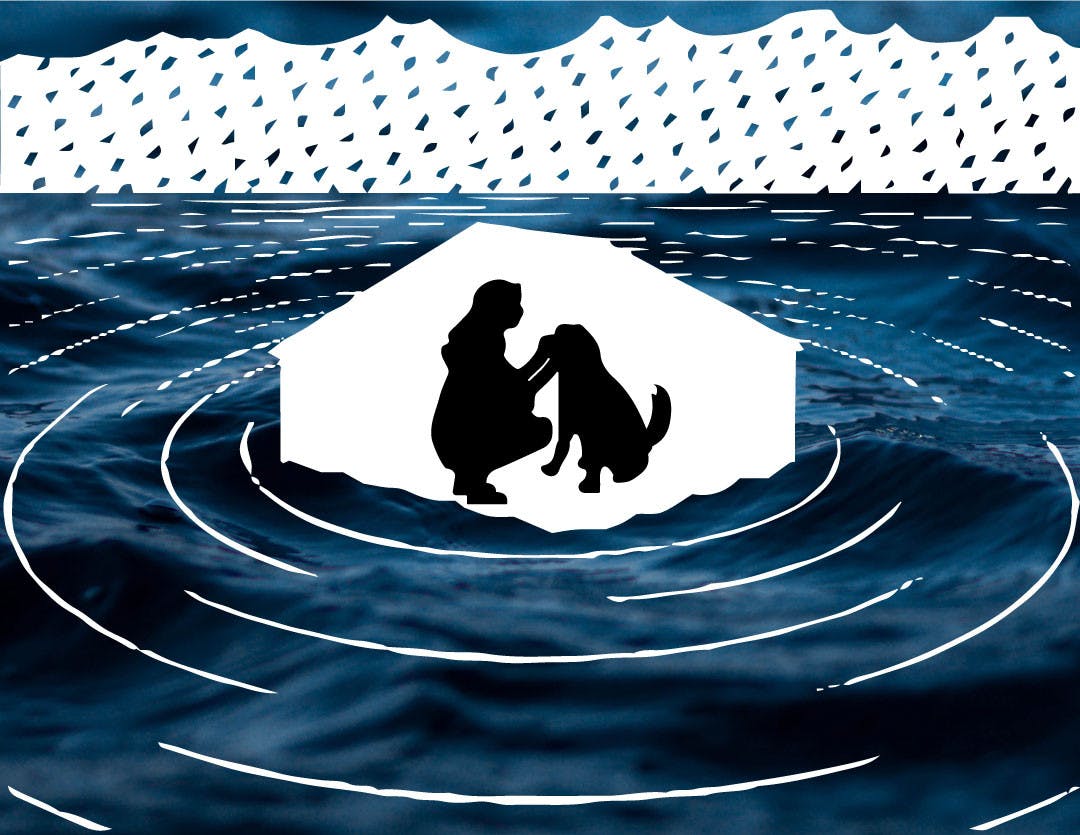Hurricane Ian moved through South Florida this week, entering the state Wednesday, Sept. 8 as a Category 4 hurricane and moving east. It has caused storm surges of up to 12 feet and has left more than 2 million customers without power.
Florida experienced catastrophic damages in some areas, according to Jeffrey Andresen, a professor in MSU’s Department of Geography and a Michigan climatologist. The damage was associated primarily with storm surges, Andresen said.
“The highest wind speed that I saw measured at a given location was, I think, 140 mph,” he said. “It may be, by some measures, the most powerful hurricane, at least one of the most powerful ones, to ever make landfall in Florida.”
Andresen said Hurricane Ian was the strongest storm to hit the Tampa area -- it’s been 70 years since the last direct hit from a hurricane, and 100 years since the last hit from a major one.
Andresen said some areas are more vulnerable to damages now, for the simple reason that these areas are more developed than they were when hurricanes touched down 70 to 100 years ago.
“We just have more things in the way, and development in places that it may not be wise to do,” Andresen said.
Some communities in Florida have built more resilient structures in response to weather hazards like Hurricane Andrew, which struck in 1992.
Andresen also said while the impacts of climate change and a warming world on tropical storms are not yet completely understood, research suggests that climate change may decrease the amount of tropical storms, while simultaneously increasing their intensity.
Devastation and loss of life is also likely for animals.
Dr. Seven Mattes, an assistant professor in MSU’s Center of Integrative Studies, researches disaster preparedness for both humans and animals. Agricultural animals rely on humans for food, water, shelter and medical care. Mass mortality can occur during such an event -- Mattes said 3.4 million chickens and 6,000 pigs were killed during Hurricane Florence.
Wild animals are usually more likely to bounce back after a hurricane, but human impacts have shrunk their habitats and climate change has intensified storms. Stray dogs and cats can be at risk, too.
“The PETS Act was a reaction to 2005’s Hurricane Katrina, in which countless humans chose not to evacuate as they were not permitted to bring their companion animals with them to evacuation shelters,” Mattes wrote via email. “When the choice is to leave your pet behind or risk the hurricane alongside them, many chose to stay by their pet’s side.”
Mattes said this leads to increased mortality for both humans and pets. Now, local emergency services must accommodate pets and service animals.
“This is an acknowledgment of the reality of pet’s places in people’s minds – they are often considered family members,” Mattes said.
Mattes said these disasters will also reveal social inequalities.
“There are natural and manmade hazards, such as hurricanes, that become disasters when they combine with vulnerabilities … A tornado is a disaster when it hits a mobile home with no storm reinforcement,” she said. “Thus, when hurricanes strike, it unveils the vulnerabilities in the communities it hits, from infrastructural issues to the impacts of socioeconomic class on the ability to see through and prepare for the storm.”
Mark Skidmore, a professor in MSU’s Department of Agricultural, Food and Resource Economics, studies the economics effects of natural disasters. Skidmore said Florida’s economic disruptions will likely be temporary. Florida, he said, is more resilient as a state that is used to tropical storms.
Barring extensive damage to business, disruption will mostly occur from patrons staying home and not spending money in retail, Skidmore said.
“Ironically, if there's significant damage, some sectors of the economy really expand rapidly during recovery as new construction occurs,” Skidmore said.
However, Skidmore said the state may require more support for its older-than-average population. Additionally, residents might experience an uptick in essential goods such as food, water and fuel.
Support student media!
Please consider donating to The State News and help fund the future of journalism.
Jason Miller, a supply chain management professor at MSU, said Hurricane Ian is unlikely to disrupt supply chains running from Florida to Michigan, but it will increase the price of freight bound for Florida.
“Paradoxically, the price of shipping freight out of Florida will actually likely decline,” Miller said, as “There’ll have to be a lot of inbound disaster relief freight … the inbound prices will increase a decent amount, because you have all the FEMA relief loads that need to be hauled there.”
Last year, he said, supply lines were in a tight spot due to the COVID-19 pandemic, but now, things are a little bit more flexible.
“If we were in a very tight market like we were last year at this time, then yes, any type of ripple would reverberate, but really affecting all the way to Michigan?” he said. "Probably not."
Discussion
Share and discuss “MSU professors, experts explain the "catastrophic" effects of Hurricane Ian” on social media.







